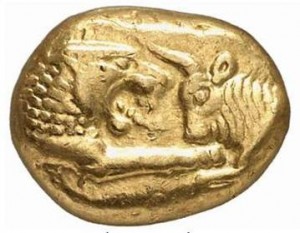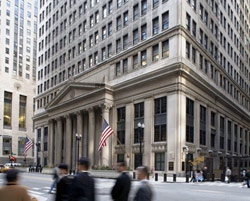The Establishment Of Gold As Currency
| by Michael Locklear
 Throughout the course of human civilization gold has played a significant role as currency. Long before this precious metal was minted into coins it was used in exchange for goods and other purposes by ancient peoples. It was the Lydians who lived in the region known today as Turkey who first learned the methods for separating silver and gold and in the process they created the first gold coins.
Throughout the course of human civilization gold has played a significant role as currency. Long before this precious metal was minted into coins it was used in exchange for goods and other purposes by ancient peoples. It was the Lydians who lived in the region known today as Turkey who first learned the methods for separating silver and gold and in the process they created the first gold coins.
The first gold coins used by the Lydians merchants were nothing more than lumps of two thirds gold and one third silver that were stamped into the shape of coins. The mixture was known as electrum. The new money was instrumental in achieving the widespread success of Lydian traders. This was during the time of the last King of Lydia, Croesus of Mermnadae around 570 BC. Because of Lydia’s massive gold reserves the super-rich are sometimes described as being “rich as Croesus”.
Once it was measured out gold could easily be used as money. Because it could be smelted, measured and formed into shape quite easily it became the perfect monetary trading unit. It was easy to move, indestructible and easy for the individual to carry around. Standardized measures for both gold and silver eventually became the preferred replacement for previous barter transactions. The Lydian gold coins were quickly and universally accepted because of their trusted standardization.
The Greeks started mining for gold around 550 BC throughout the Mediterranean and Middle Eastern regions. Long before that Homer wrote in the Iliad and Odyssey that goal is the glory of the immortals and a sign of wealth among ordinary humans.
Long before the Lydians and the Greeks started to use gold as money the standard measure for gold was established in ancient Egypt. Menes, who established the first Egyptian dynasty created a value of code and the relationship ratio between gold and silver. In the code he established one part of gold was equal to two parts of silver.
Seti I is credited with the creation of the world’s first gold treasure map around 1320 BC. The papyrus that recorded the earliest locations of gold mines, housing for miners, roadways and mountains where gold would be found now resides in the Turin Museum. The location of Seti’s gold mine is no longer known and the map is of little help since the location was probably coded to prevent the wrong people from finding it. Some believe that it may be located near the location of the El Sid in the region around the Wadi Fawakhir.
The establishment of a uniform monetary standard for gold and silver coins laid the foundation for the beginning of international trade. The creation of money allowed the economies of many different nations to grow and develop.
Both the Greek and Roman empires which ruled the Western world and the Classic period used gold and silver money to trade for spices in India and to purchase silk in China. Gold and silver coins were widely distributed by the Roman empire from Britain through Egypt and all of North Africa. This began what we now recognize as the model for the modern global economies.
Related Posts
Will Gold Reach $1,700 an Ounce By Next Year?
March 2, 2015 - Don’t expect to see much of a climb in gold prices this year, but a spike to $1,700 an ounce or more could come as early as the summer of 2016. Gold futures prices on Comex closed at $1,210.10 an ounce on Thursday, with the metal stuck in a range of just over $114 an ounce year to date, based on the most-active contracts. “Gold will see another… more
Gold Rises on Weak Dollar
October 17, 2012 - Gold got a boost from news that Moody’s has affirmed the investment grade status for Spain and the expectation from analysts that Spain will soon be seeking financial aid from the European Union. The euro reaching a one-month high as the dollar fell after Moody’s announcement also helped to fuel increases in gold prices. Investor confidence remains shaken as the outlook for further significant increases in gold… more
Gold Drops On New Economic Numbers
October 15, 2012 - Gold prices fell to their lowest level in two months but still remain near an 11 month high. Investors are still watching to see what Spain’s decision will be concerning a bailout. Spain’s credit rating was lowered on Wednesday by Standard & Poor’s to near junk level, while economic ministers report that a future request for a bailout from the Eurozone will not make any political resistance. Gold bullion… more
Gold Rallies But Remains Volatile
October 1, 2012 - Positive moves in hedge fund buying and gains in bullion prices (bullion is showing the highest quarterly price increases in two years) pushed gold prices up dramatically today. Continued speculation about increased inflation resulting from recent monetary easing actions from the Federal Reserve pushed gold to a 10 month high. In an interview with CNBC, Charles Evans President of the Federal Reserve Bank of Chicago, said that… more
